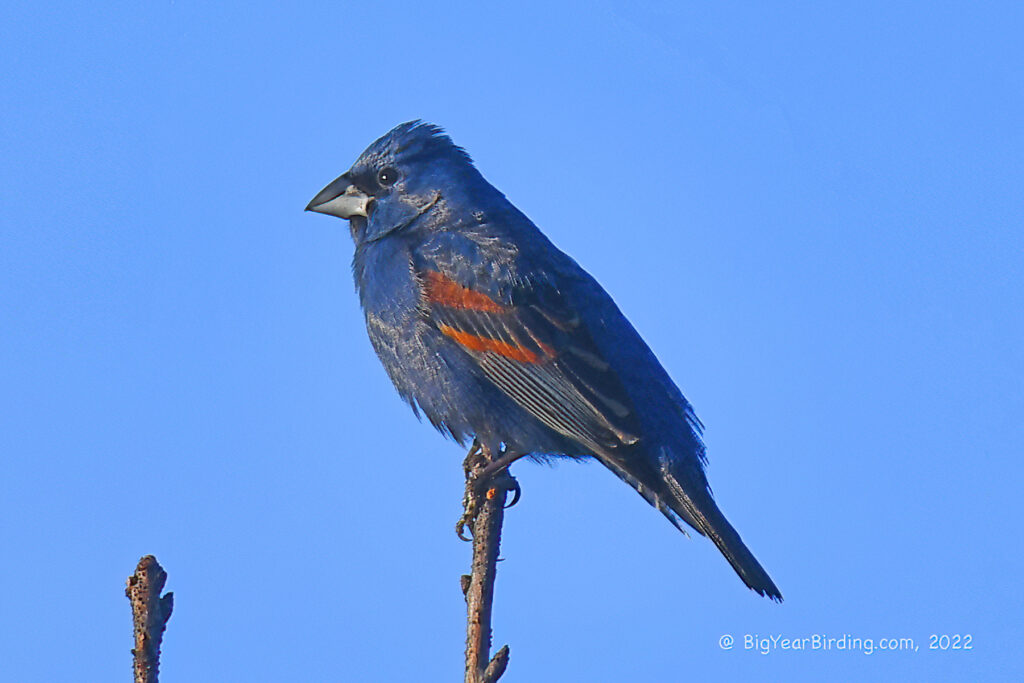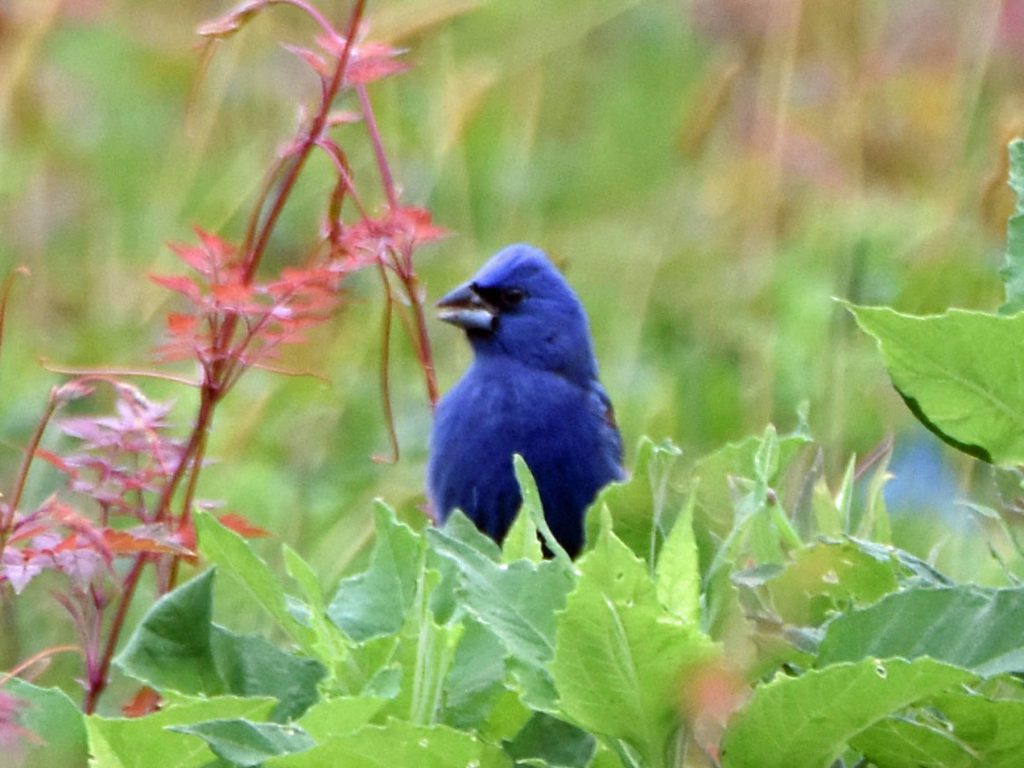
The Blue Grosbeak (Passerina caerulea) is a stunning songbird that belongs to the Cardinalidae family. This species is a summer resident in North America and can be found breeding from the central and southern regions of Canada down to northern South America. The Blue Grosbeak is a medium-sized bird, measuring around 6.3-7.5 inches (16-19 cm) in length and weighing approximately 1-1.5 oz (28-42 g).

One of the most distinguishing field marks of the male Blue Grosbeak is its bright blue plumage on its head, back, and wings, with rusty-brown wingbars and a rich chestnut breast. The female Blue Grosbeak, on the other hand, is light brown above and buffy below, with faint rusty wingbars. Both sexes have a large, conical bill that is silver-gray, and their eyes are dark with a distinctive white ring around them.
During migration, the Blue Grosbeak travels to wintering grounds in southern Mexico, Central America, and northern South America. This species is a neotropical migrant, meaning it spends the winter in the tropics and migrates north to breed in the spring and summer.
The Blue Grosbeak prefers open habitats such as fields, meadows, and forest edges, and it is often found in areas with shrubs or trees, where it can perch and sing its melodic song. This species is also known for its unique call, which is a series of rich, clear whistles followed by a buzzy trill.

In addition to its striking appearance and beautiful song, the Blue Grosbeak is also an important seed disperser, as it feeds on various seeds and fruits. This species is a vital part of many ecosystems and is a beloved bird among birdwatchers and nature enthusiasts alike.
